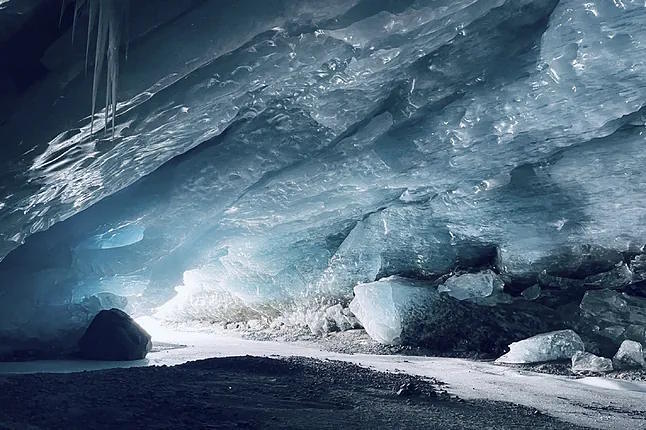Even if the planet were to achieve the impossible of halting global warming, and temperatures were to stabilize at the current level of 1.2°C, 39% of the world's glacier mass will disappear, and sea levels will rise by more than 10 centimeters.
In a new study just published in the journal Science, an international team of 21 scientists from ten countries used eight glacier models to calculate ice loss from over 200,000 glaciers outside of Greenland and Antarctica. The team assessed a wide range of global temperature scenarios, assuming that temperatures would remain constant for thousands of years in each scenario.
"The decisions we make today will resonate for centuries and will determine how much of our glaciers can be preserved," points out Harry Zekollari, from Vrije Universiteit Brussel, and lead co-author of the study.
In all scenarios, glaciers lose mass rapidly for decades and then continue melting at a slower pace for centuries, even without additional warming. This long-term response means that glaciers will continue to feel the effects of current heat for a long time.
"Most glacier studies stop at the year 2100, which is problematic when simulating the long-term impact of current climate policies, given the glaciers' long-term response over time," explains Harry Zekollari.
Studies limited to the year 2100 estimate that around 20% of the current glacier mass will be lost regardless of future warming, but the new study reveals that almost double would disappear under current conditions when considering multi-century time scales. "40% of glacier mass is doomed to disappear," states lead co-author Harry Zekollari.
With just ten centimeters, low-lying areas near the sea such as deltas, islands, and coastal cities would be more prone to flooding, especially during storms, high tides, or hurricanes. Some areas in Miami, Venice, or Bangladesh already experience frequent flooding with less than 10 centimeters. Beach and coastal erosion would accelerate, and small islands like the Maldives or Tuvalu would lose part of their habitable territory. Saltwater can more easily penetrate freshwater aquifers, affecting the supply in coastal areas. Roads, ports, and airports near the sea would require more frequent adaptations. Cascade impacts that will be felt in all regions and generations.
"Glaciers are good indicators of climate change, as their retreat allows us to see with our own eyes how the climate is changing. However, their current size significantly underestimates the magnitude of climate change already occurring. The situation of glaciers is, in fact, much worse than what is currently observed in the mountains," states lead co-author Lilian Schuster from the University of Innsbruck.
The study, led by Zekollari and Schuster, was conducted within the framework of the Glacier Model Intercomparison Project (GlacierMIP) and coordinated by the Climate and Cryosphere Project (CliC) of the World Climate Research Programme (WCRP).
"These effects underscore the crucial importance of current climate policies," says Harry Zekollari. "Our study makes it clear that every fraction of a degree matters. If we manage to limit global warming to +1.5°C instead of +2.7°C, we could still save twice as much glacier ice." In summary: for every additional 0.1°C of warming, the world risks losing approximately 2% more glacier ice.
However, the planet's average warming will with a 70% probability exceed the 1.5°C threshold compared to the pre-industrial era between 2025 and 2029, as projected earlier this week by the World Meteorological Organization (WMO). "We have just experienced the hottest ten years ever recorded. Unfortunately, this WMO report does not indicate any signs of change," summarized WMO Deputy Secretary-General Ko Barrett.
This study is a key contribution to the United Nations' International Year of Glacier Preservation (2025), to emphasize the urgent need for global climate action to save the world's glaciers. The research was conducted within the framework of the Glacier Model Intercomparison Project (GlacierMIP), coordinated by the Climate and Cryosphere Project (CliC) of the World Climate Research Programme (WCRP).
